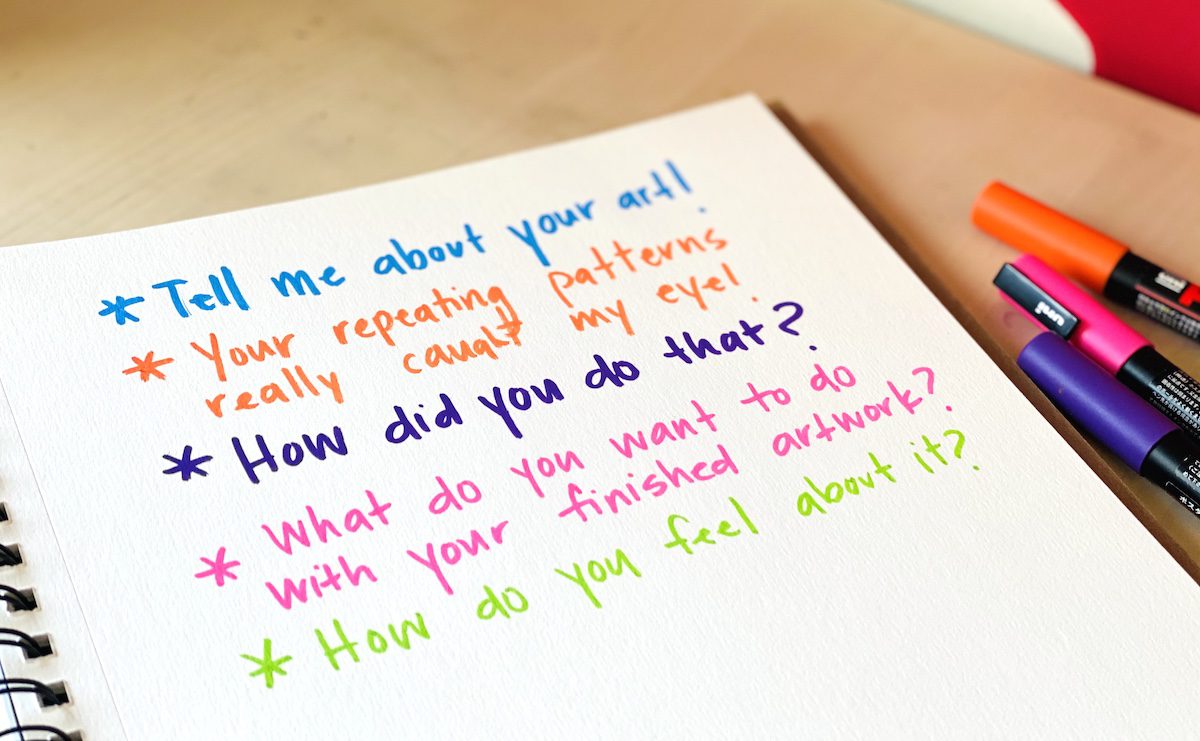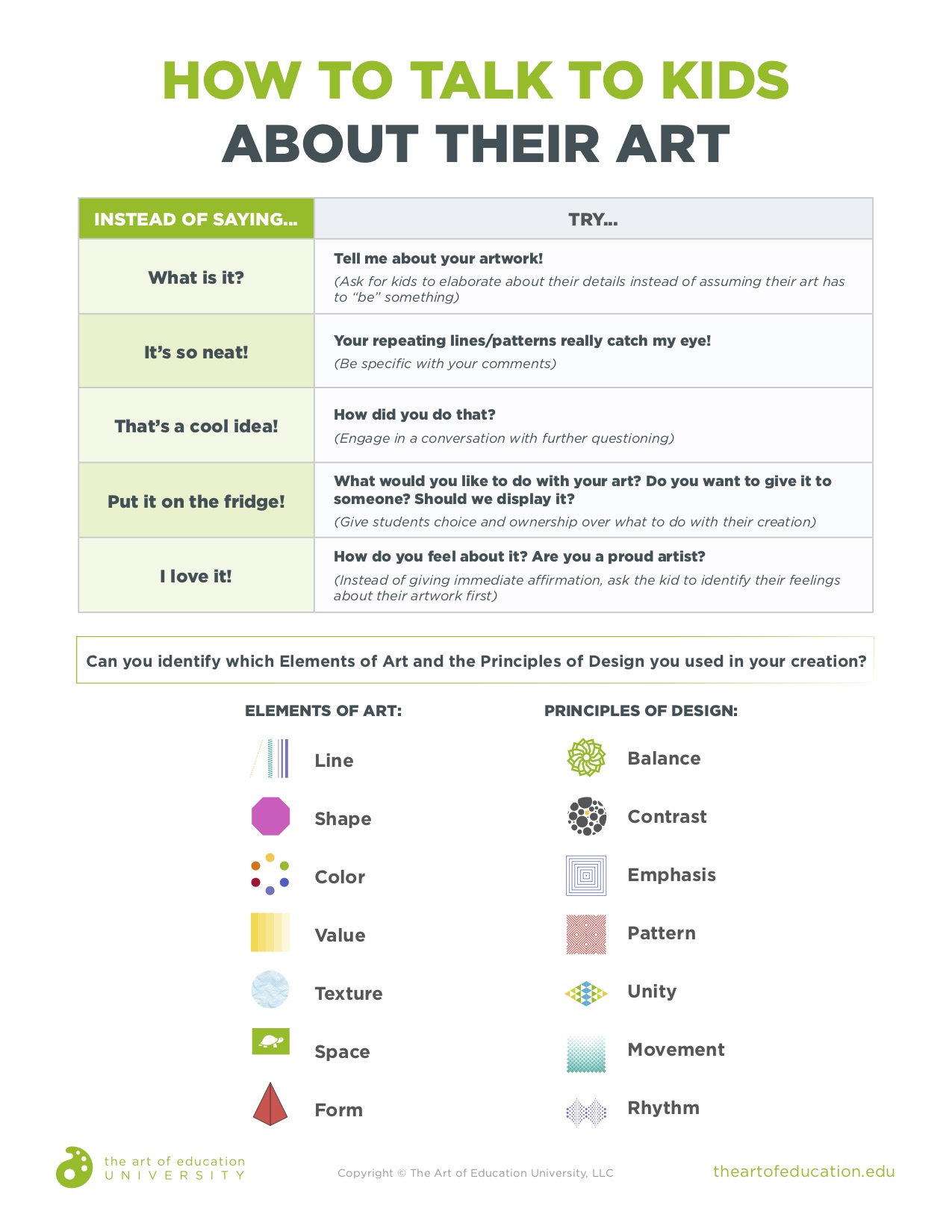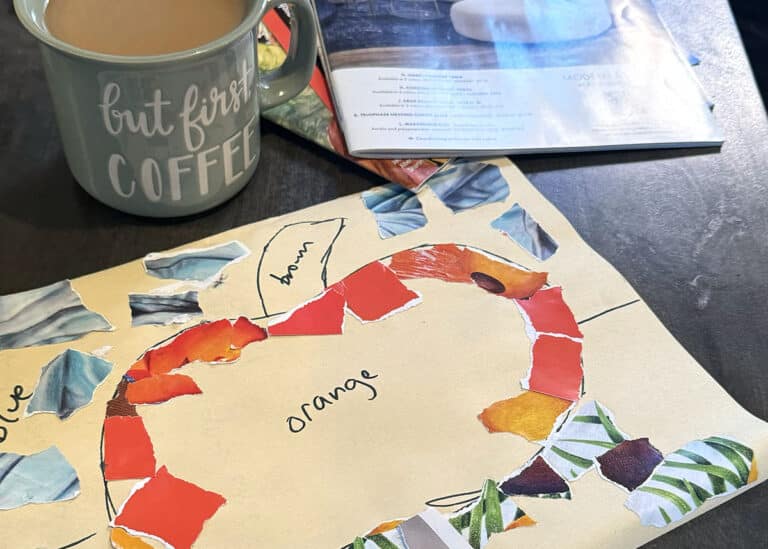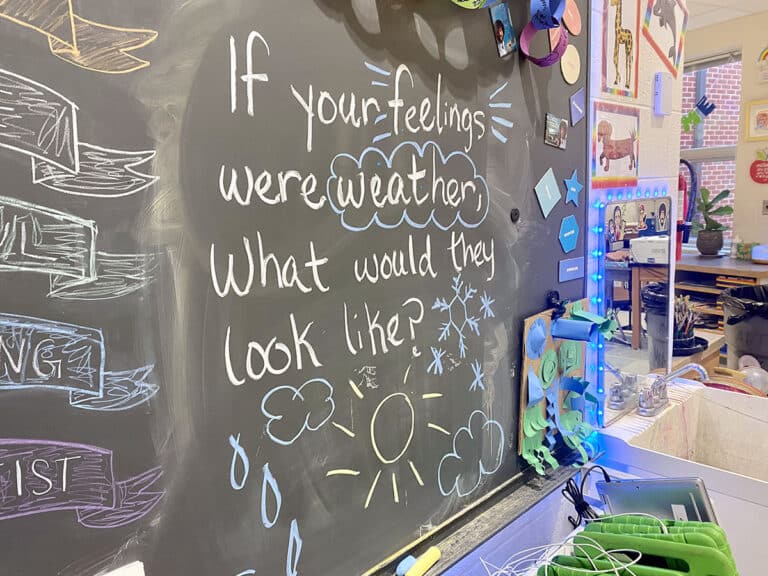Art Education and the Coronavirus (COVID-19)
As teachers, we wear many hats. We are educators, but we also act as parents, nurses, counselors, entertainers, and more when it comes to teaching and connecting with our artists. We went to school, got high-level degrees in art education, had in-depth conversations about child psychology, and are passionate about how we treat our kids as artists.
As we all work through the reality of the COVID-19 pandemic, parents and guardians find themselves needing to take on the role of teachers. Though they may not have gone to college to be art teachers, it is still important to teach parents and guardians how to talk to kids about their art.
The most important thing to remember when sharing information with parents and guardians at this time is to keep it simple. People are trying to balance this new normal of living and it can be overwhelming. Avoid adding unnecessary stressors. However, giving parents and guardians enrichment information about how to encourage creativity and conversation with their kids can be a helpful and powerful tool.
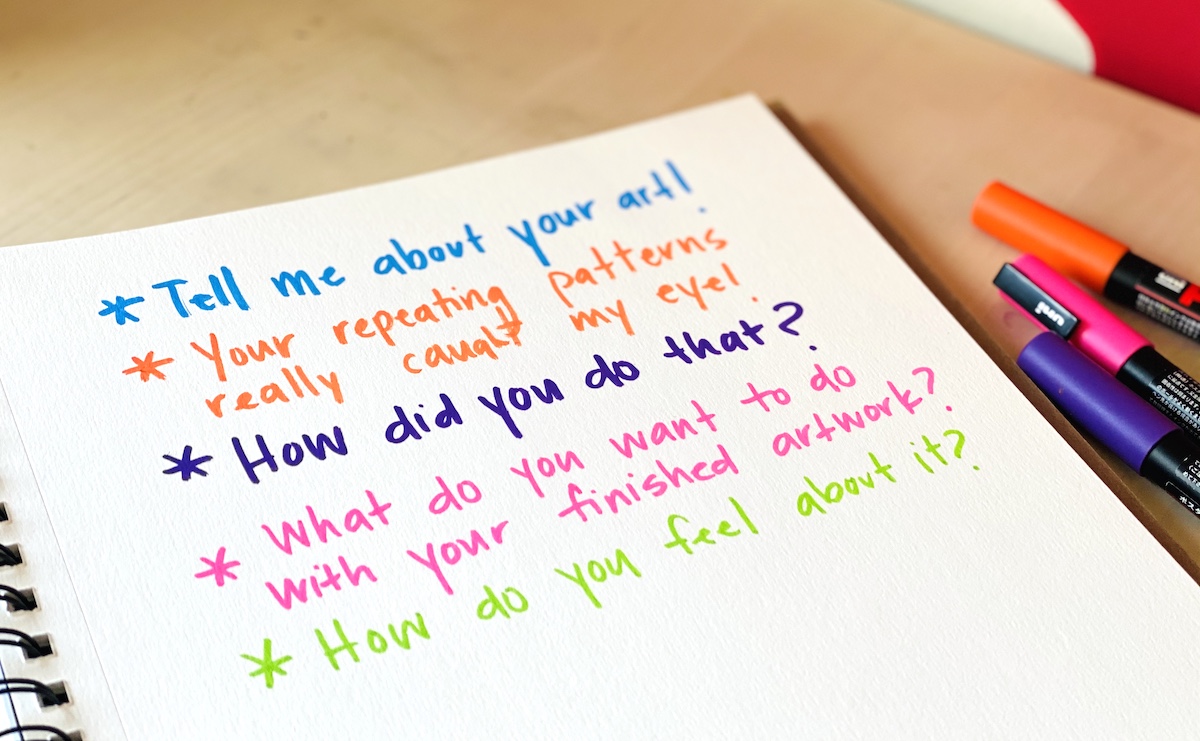
When talking to kids about their art, focus on these 6 things:
1. Let them use their own words.
Instead of saying, “What is it?” try, “Tell me about your artwork!”
When a kid brings their creation up to you with a smile, it’s important to let them talk about their work in their own words. A scribble or a paper sculpture doesn’t need to “be” anything. Reframing the question from “What is it?” to “Tell me about your artwork” allows the child to use their own words to describe what they made. Maybe the child created a piece of art inspired by a feeling, an imaginary world, or simply had fun playing with art materials. No matter what they made, the best way to encourage their creativity and imagination is to allow them the chance to describe their work in their own words.
2. Be specific with your comments.
Instead of saying, “It’s so neat!” try, “Your repeating lines really catch my eye!”
Using specific comments shows kids you are genuinely looking at their work. Using a traditional adjective such as “cool,” “awesome,” or “great,” to describe artwork is all well and good but can leave a young artist wanting more. Try picking one or two specific focus areas about the artwork and make a direct comment relating to those areas. Kids seek positive affirmation just as much as the rest of us. Being specific with your comments allows kids to feel affirmed in their creativity.
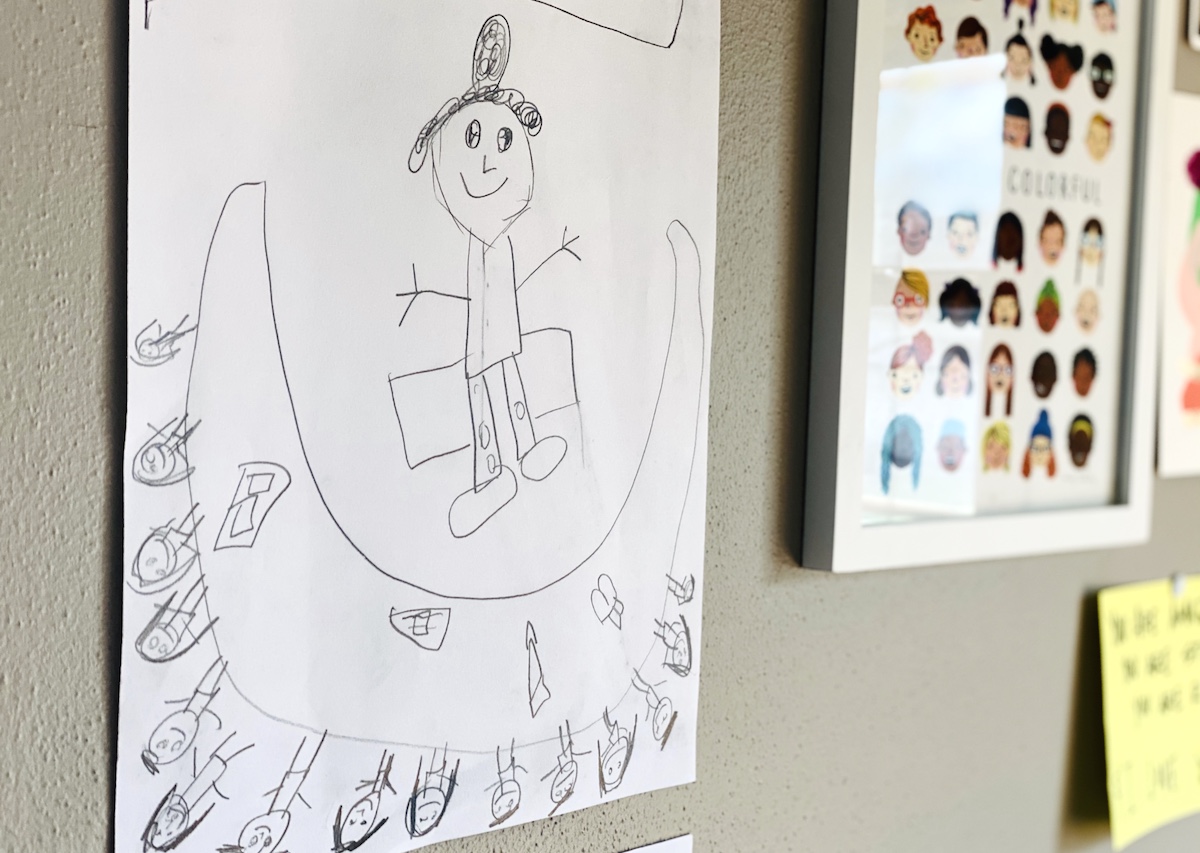
3. Ask interesting questions.
Instead of saying, “That’s a cool area!” try, “How did you do that?”
Asking interesting questions is one of the basics of great conversation. Encouraging kids to expand on their creative process and explain how they did something is a great way to practice discussion skills. The ability to talk about how the artwork was created and the processes that went into making it is a skill artists all over the world use. Teaching your kids to respond and reflect on their artmaking process will inevitably make them better artists and critical thinkers.
4. Let them choose the display.
Instead of saying, “Put it on the fridge!” try, “What would you like to do with your art?”
Creativity is not over once the artwork is complete. What kids decide to do with their completed artwork is also a way to stretch their imagination. Maybe the child wants to create a gallery display wall. Maybe the child wants to send the artwork in the mail to a loved one. Maybe the child wants to fold it up and turn it into a paper airplane. Giving kids the power to control the display of their artwork can provide a tremendous sense of ownership and pride.
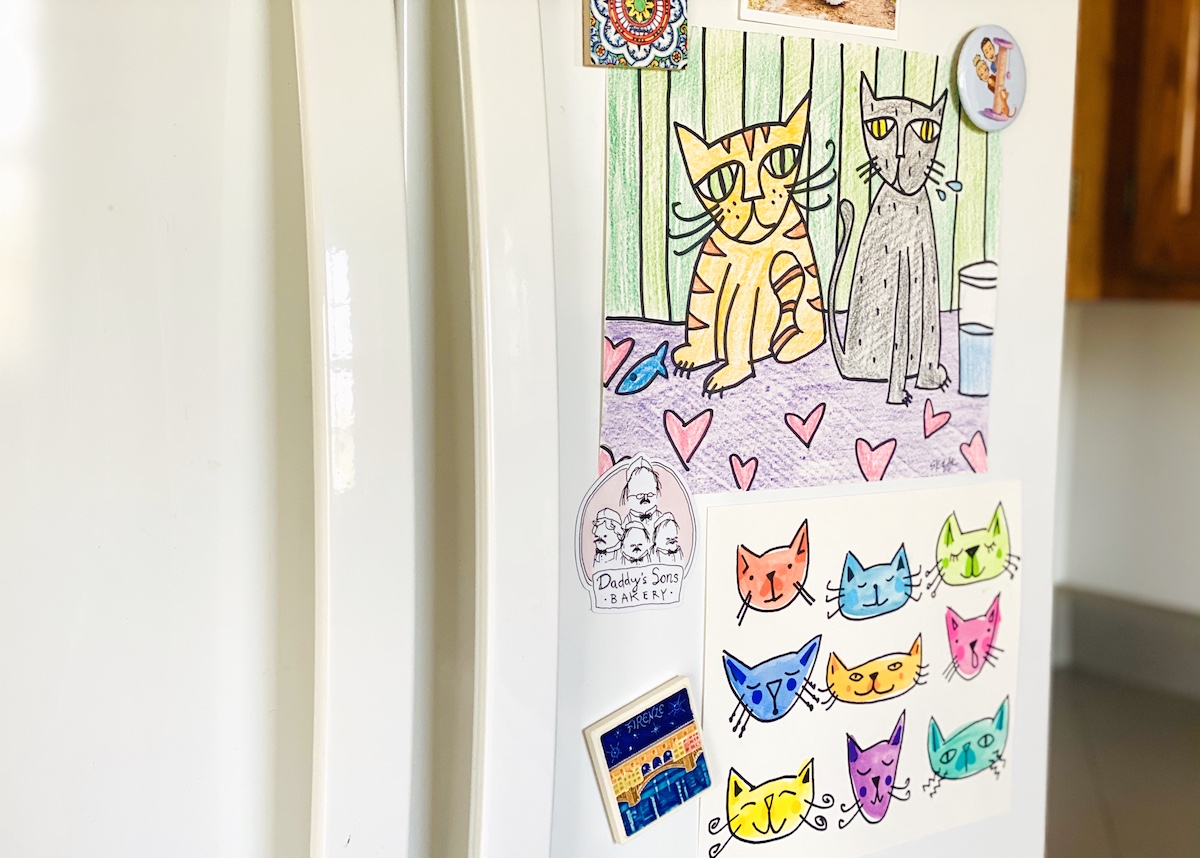
5. Give them time to identify their feelings first.
Instead of saying, “I love it!” try, “Are you a proud artist?”
Let’s face it, validation feels great, and we all want it. But sometimes, we need to practice valuing our own feelings, too. Of course, you should give positive feedback to kids. However, you can also try letting kids identify their own feelings first by asking questions like “How do you feel about it?” or “Are you proud of your artwork?” Encouraging kids to think about how they feel will give you a deeper insight into their thought process. It will also build self-confidence in their own artwork instead of relying solely on the affirmation of others.
Need more information? Learn more here!
6. Use the Elements and Principles as a catalyst.
Ask, “Can you identify which Elements of Art and the Principles of Design you used in your creation?”
The Elements of Art (Line, Shape, Color, Value, Texture, Space, Form) and the Principles of Art (Balance, Contrast, Emphasis, Pattern, Unity, Movement, Rhythm) are always used in creating art. Even if kids are not specifically intentional when choosing colors or creating a sense of emphasis, it is still a part of artmaking. Engaging in conversations about what elements and principles kids can spot in their artwork is a fun way to have a meaningful art conversation.
To help, download this helpful guide.
For more art conversations at home, read How to Get Your Students to Talk About Art at Home.
No matter how you go about it, talking to your kids about their art is important. Building connections through artmaking is natural. Connecting with your kids and talking to them about their creativity is the perfect way to show you care. You’ll love hearing what your artists share with you about their creations.
What kinds of questions do you think are best to ask kids?
Why is it important to extend the conversation about art?
How else can you encourage creative discussions with your kids?
Magazine articles and podcasts are opinions of professional education contributors and do not necessarily represent the position of the Art of Education University (AOEU) or its academic offerings. Contributors use terms in the way they are most often talked about in the scope of their educational experiences.
